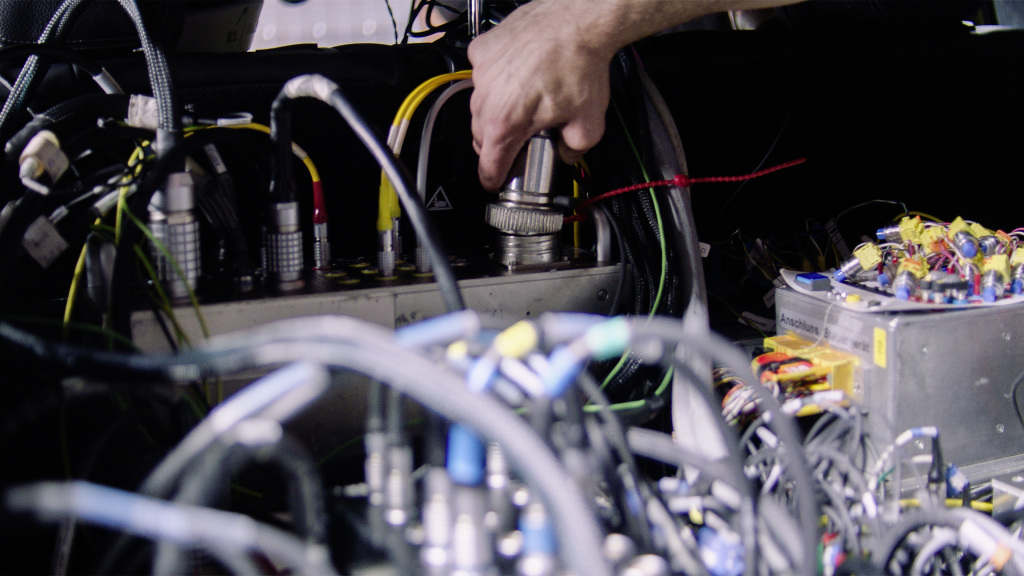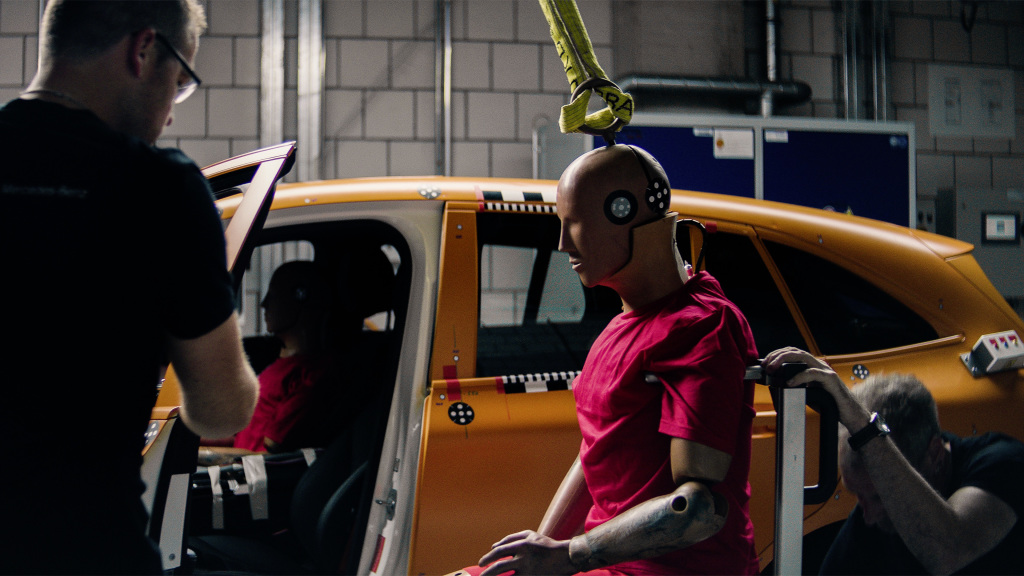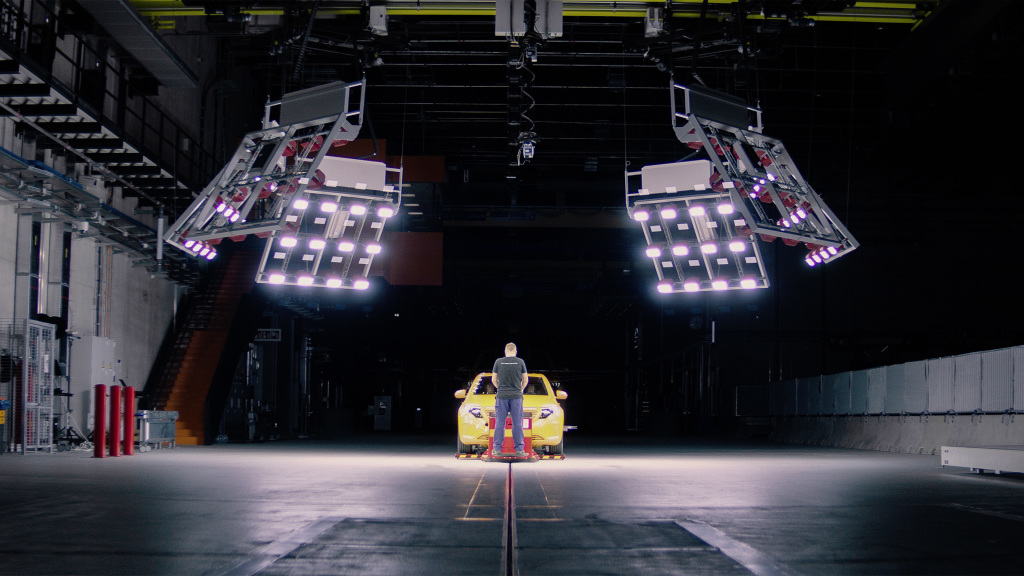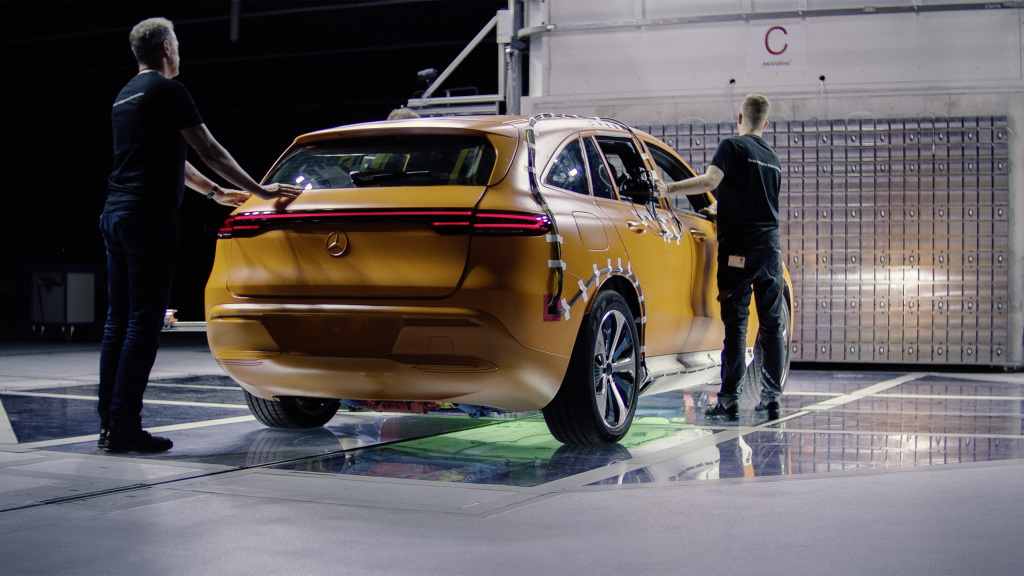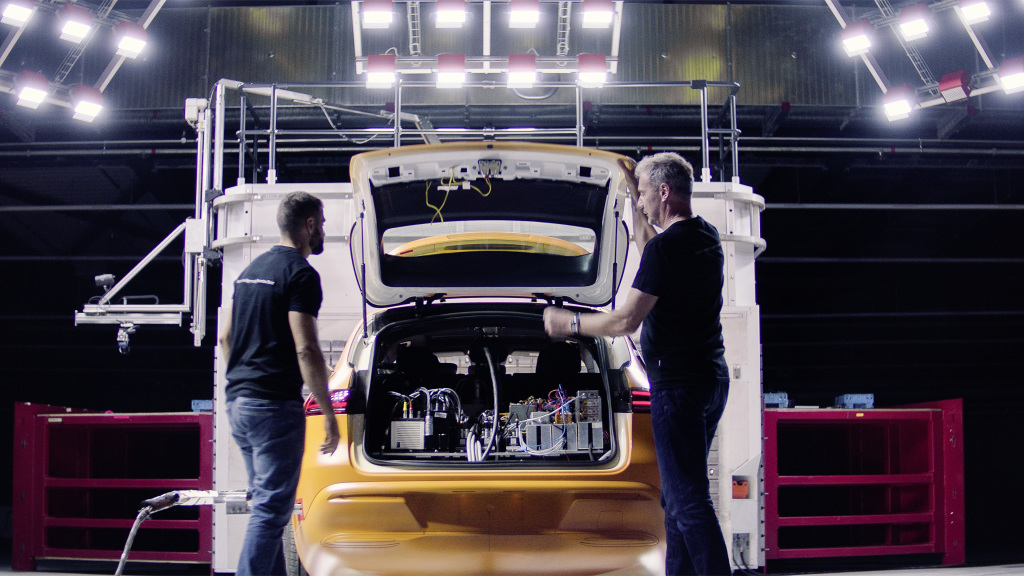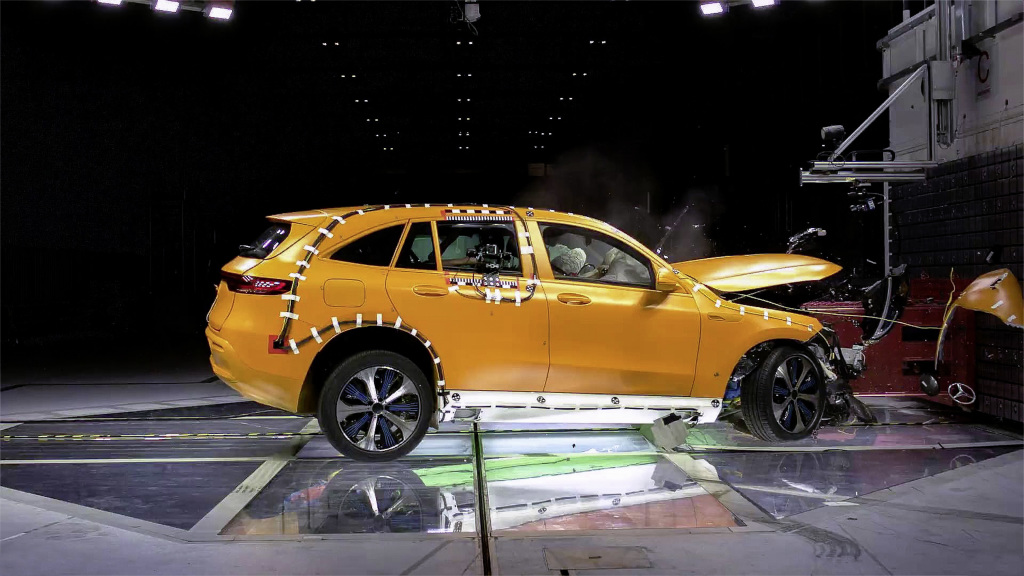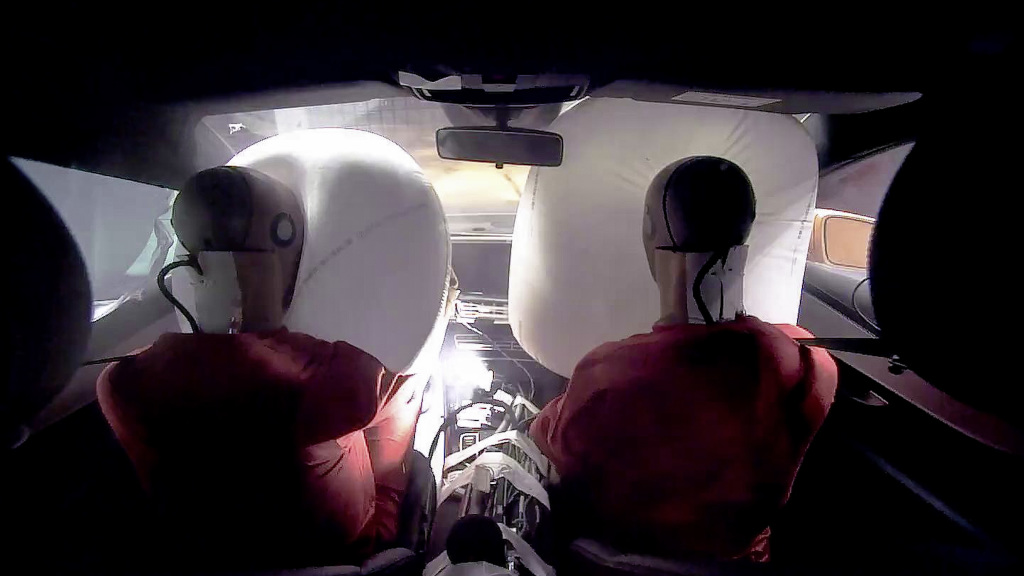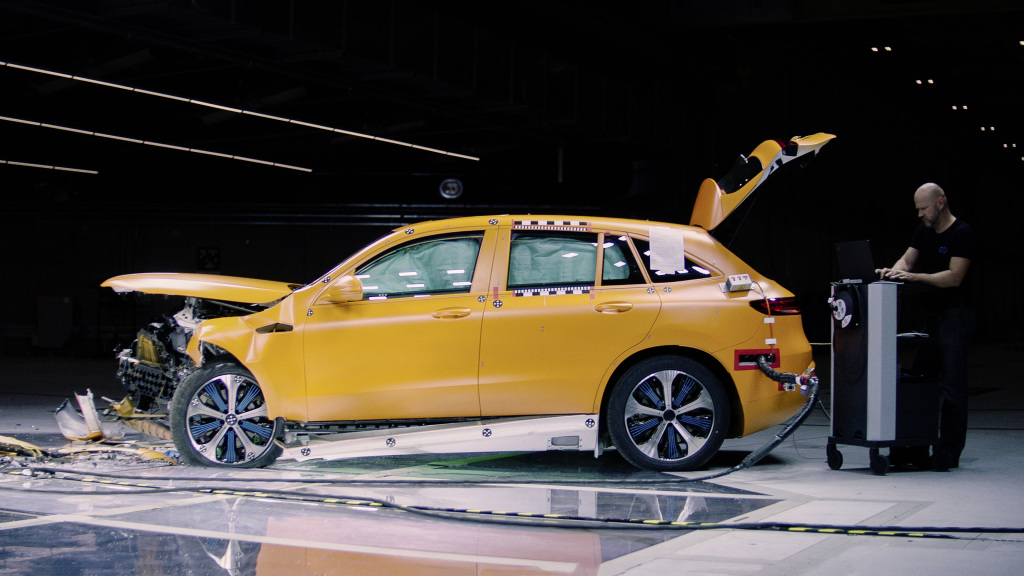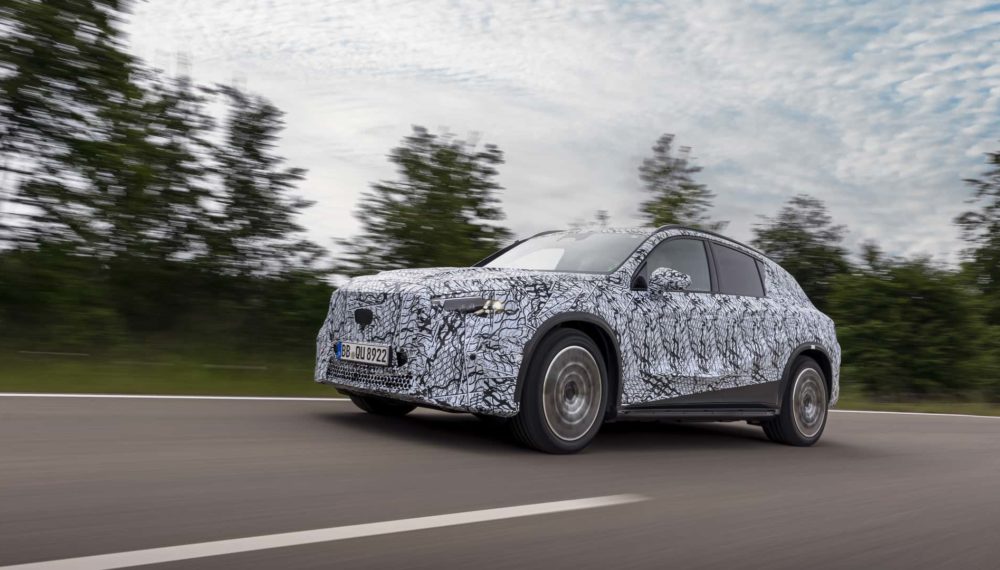At the most advanced crash test center in the world, vehicles, including prototypes with large electric batteries, are tested under harsh crash conditions. Thanks to this extensive experience with high-voltage drive systems, Mercedes-Benz has discovered a special safety concept and a whole array of constructive measures which deliver the EQC’s high level of crash safety:
- A new subframe surrounds the drive components located in the front section, and this unit is supported by the usual mounting points.
- The battery is surrounded by a robust frame with an integral crash structure. Deformation elements are installed between the frame and the battery, and these are able to absorb additional forces in the event of a severe side impact.
- A battery guard in the front area of the battery is able to prevent the energy storage unit from being pierced by foreign objects.
- The high-voltage system can also be shut down automatically in a crash, depending on its severity. A distinction is made between a reversible and an irreversible cut-off. When it is shut down the voltage in the high-voltage system outside of the battery reduces to below the safety-relevant voltage limit in a very short time.
- Another feature of the comprehensive high-voltage safety concept is that the charging process is automatically curtailed if an impact is detected when stationary at a quick-charging station (DC charging). There are also shutdown points where emergency teams can deactivate the high-voltage system manually.
- In addition to assessing the occupant values during a crash, the battery’s accident safety was also tested at the development centre of Deutsche ACCUMOTIVE, a wholly-owned Daimler subsidiary. Test criteria included the battery’s behaviour under impact and when penetrated by foreign bodies, with overheating and overloading also simulated.

Mercedes-Benz EQC: Crash-Erprobung im Mercedes-Benz Technologiezentrum Fahrzeugsicherheit (TFS) in Sindelfingen.;Stromverbrauch kombiniert: 22,2 kWh/100 km; CO2-Emissionen kombiniert: 0 g/km, vorläufige Angaben*
Mercedes-Benz EQC: Crash-testing at the Mercedes-Benz Technology Centre for Vehicle Safety (TFS) in Sindelfingen.;combined power consumption: 22.2 kWh/100 km; combined CO2 emissions: 0 g/km, provisional figures*
Beyond the structural safety and the battery protection concept, the model’s specially adapted restraint systems are particularly important for the occupants in the event of an accident.
- Three-point seat belts with pyrotechnical belt tensioners and belt force limiters are installed for the driver, front passenger and passengers on the outer rear seats (normal three-point seat belt in the centre at the rear).
- i-Size (Europe) and ISOFIX (other countries) child seat attachment points for securely attaching appropriate child seats on the outer rear seats
- Window airbags in the roof area between the A, B and C-pillars for the head area of the driver, front passenger and passengers on the outer rear seats
- Combined thorax/pelvis side impact airbags for driver and front passenger. Additional optional side impact airbags for the outer rear seats.
- Airbags for driver and front passenger in the event of a severe frontal impact, with dual-stage, time-delayed deployment on the passenger side
- Knee airbag for the driver
Numerous measures help to ensure that when Mercedes-Benz vehicles suffer an accident, consequential damage is reduced and rescue of the occupants is assisted. As soon as a protective system (e.g. belt tensioner and airbag) is triggered, an emergency call or a service call is made or a breakdown is detected, the following measures can be initiated depending on the accident type and severity:
- Automatic activation of Mercedes-Benz emergency call to notify emergency services of the location and emergency situation and initiate rescue.
- Shutdown of the high-voltage system
- Activation of the hazard warning system to warn other road users
- Interior lighting switched on
- Front side windows lowered for ventilation in the event of airbag deployment
- Central locking system unlocked
- Lifting of the electrically adjustable steering column
- Notification of a detected breakdown or accident situation to Car-to-X communication and to the Mercedes-Benz service centre
- A rescue sticker provides a direct link to the vehicle’s rescue data sheet. Corresponding stickers are affixed to the charging flap and to the opposite B-pillar of the vehicle for this purpose. In the aftermath of an accident, rescue services can scan the QR code with a smartphone or tablet PC for fast and reliable access to the rescue data sheet for the specific vehicle concerned, thus facilitating rescue operations.
- Alongside the rescue data sheets, the Rescue Assist App for smartphones and tablets also has three-dimensional views of the vehicle – now also offline in case there is no mobile network available at the accident scene.
Video impressions from the EQC’s crash testing can be found here.
[1] Figures for power consumption and CO2 emissions are provisional and were determined by the Technical Service. The range figures are also provisional. EC type approval and a certificate of conformity with official figures are not yet available. Differences between the stated figures and the official figures are possible.
